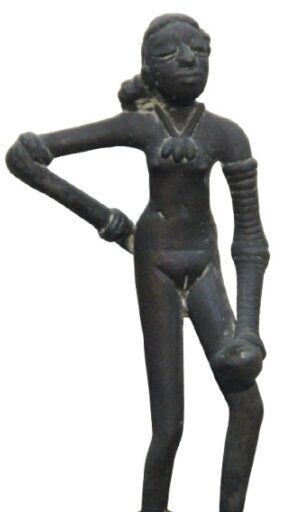The Taj Mahal was designated as a UNESCO World Heritage Site in 1983, recognizing its outstanding cultural and architectural significance.
This designation emphasizes the importance of preserving this cultural treasure for future generations.
HAPPY TRAVELLING
Menu
A complete tourist and cultural guide of
Taj Mahal
A timeless symbol of love

Commissioned in 1632 and completed in 1648, the Taj Mahal was built by Shah Jahan to honor his wife Mumtaz Mahal, who passed away during childbirth. The monument, designed by Ustad Ahmad Lahori, involved over 20,000 artisans, including sculptors, calligraphers, and masons from India, Persia, and Central Asia. The white marble was sourced from Makrana, Rajasthan, and precious stones from across the world were embedded in its intricate artwork.
During the British rule, Britishers looted most of the jewels of the Taj Mahal, but later restoration efforts preserved its magnificence. Today, it remains a global icon of love and devotion.
Architecture of the Taj Mahal
The Taj Mahal stands as a testament to Shah Jahan’s passion for architectural innovation. The structure embodies symmetry, curvilinear forms, intricate decorations, and a unique blend of Indian and Persian influences, shaping future Indian architecture. The Taj Mahal is a marvel of Mughal architecture, blending Persian, Islamic, and Indian styles.
Materials Used
The mausoleum is clad in white marble, symbolizing purity. Mughal poets compared its glow to dawn. Its luminosity enhances its ethereal beauty.
Design Symbolism
It represents paradise, influenced by Mughal beliefs. White marble and red sandstone signify divinity. Red links the Mughals to Persian traditions.
Architectural Style
It follows geometric precision and strict symmetry. Proportional harmony and intricate detailing define it. Symbolism is deeply rooted in its design.
Perfect Symmetry
The complex exhibits perfect balance and order. The garden and structures complement each other. White marble enhances the mausoleum’s grandeur.
Spatial Layout
The design reinterprets Mughal garden-tomb traditions. A riverfront garden symbolizes a paradise. The central axis emphasizes divine harmony.
Surroundings
The Taj Mahal complex includes a mosque, a guest house (Mehman Khana), and a forecourt (Jilaukhana) zone, all built of red sandstone and marble.
Main Mausoleum
Made of white marble, crowned with a grand dome and four minarets, each standing 40 meters high. It was decorated with 28 types of jewels most of which were looted by Britishers.
Calligraphy & Inlay
The walls feature exquisite Persian inscriptions from the Quran and intricate pietra dura (stone inlay) work using gemstones like jasper, jade, turquoise, and lapis lazuli.
Pool & Gardens
The monument is surrounded by charbagh gardens, symbolizing paradise, with a central waterway reflecting its beauty.
Mosque & Guesthouse
Two red sandstone structures flank the Taj Mahal, serving as a mosque and a guesthouse, adding symmetry to the complex.
Discover the Beauty of the Taj Mahal

The Taj Mahal, one of the Seven Wonders of the World, is a breathtaking marble mausoleum located in Agra, Uttar Pradesh. Built by Mughal Emperor Shah Jahan in memory of his beloved wife Mumtaz Mahal, the Taj Mahal stands as a symbol of eternal love and artistic grandeur. The pristine white marble, intricate carvings, and mesmerizing symmetry make it one of the most visited landmarks in the world. The monument is especially enchanting at sunrise and sunset when the changing light enhances its ethereal beauty. Visitors from all over the world are captivated by its rich history, stunning architecture, and the heartfelt story behind its creation.
Cultural Significance of the Taj Mahal
The Taj Mahal is not just a monument; it represents the pinnacle of Mughal craftsmanship and India’s rich cultural heritage. It symbolizes:
Pinnacle of Mughal Architecture:
The Taj Mahal is considered the pinnacle of Mughal architecture, showcasing a harmonious blend of Persian, Islamic, and Indian architectural traditions.
Its intricate designs, symmetrical layout, and use of white marble exemplify the artistic and architectural prowess of the Mughal era.
Inspiration for Art and Culture
Artists and craftsmen have drawn inspiration from the Taj Mahal’s ornate calligraphy, delicate marble inlays, and the lush gardens surrounding it.
Its influence extends to various art forms, including paintings, sculptures, and literature, where its timeless romance and historical significance are often celebrated.
UNESCO World Heritage Site
Should i visit the Taj Mahal?
A UNESCO World Heritage Site, the Taj Mahal is an architectural masterpiece that blends Persian, Islamic, and Indian design elements. The changing hues of the monument during sunrise, noon, and sunset create an enchanting experience for visitors. Its intricate calligraphy, delicate inlays, and serene gardens make it a must-visit destination for history lovers, architecture enthusiasts, and romantic travelers alike. The tranquil Yamuna River flowing beside it adds to its picturesque charm, creating a breathtaking reflection of the monument. Experiencing the Taj Mahal under the moonlight offers a surreal and unforgettable view, making it a truly magical destination.

Best Time to Visit the Taj Mahal
The ideal months to visit are October to March. The weather is cool, ensuring a comfortable experience. Avoid April to July due to extreme heat.

Sunrise
At dawn, the Taj Mahal glows in golden hues, creating a breathtaking sight. The soft light accentuates its intricate carvings, highlighting the delicate inlay work. The Yamuna River reflects the monument’s beauty, adding to its ethereal charm. Early mornings also bring fewer crowds, offering a peaceful and uninterrupted view.
Full Moon Nights
On full moon nights, the Taj Mahal shimmers under the silvery glow, creating a surreal and enchanting spectacle. The white marble reflects the moon’s radiance, making the entire structure appear luminous. The tranquil atmosphere, combined with the play of light and shadow, enhances its dreamlike allure. With limited tickets available for night viewing, it offers an exclusive and once-in-a-lifetime experience.

How to Reach the Taj Mahal
The Taj Mahal is well-connected by air, rail, and road.
By Air
The fastest way to reach the Taj Mahal is by air. Agra has its own airport, located about 7 km from the city center. Indian Airlines operates daily flights to Agra from major cities in India.
By Rail
Agra is well-connected by train, with Agra Cantonment being the main railway station. Other stations include Raja-ki-Mandi and Agra Fort. Major trains like the Palace on Wheels, Shatabdi Express, Rajdhani Express, and Taj Express connect Agra with Delhi and other cities.
By Road
Regular bus services connect Agra to Delhi, Jaipur, Mathura, and Fatehpur Sikri. The Idgah Bus Stand is the main terminal. Taxis from Delhi to Agra are also available at special discounts.
Local Transportation
Once in Agra, visitors can use taxis, auto-rickshaws, cycle rickshaws, and prepaid cabs to reach the Taj Mahal. To reduce pollution, only battery-operated buses, horse-driven tongas, and eco-friendly vehicles are allowed near the monument. Bicycles can also be rented for a unique travel experience.
1. Western Gate (Main Entrance)
The Western Gate is the primary entrance to the Taj Mahal. It faces the Green Shahjahan Garden, Agra Cantonment, and Agra city. This gate is the busiest as most visitors enter from here. Just outside the gate, there is a red sandstone structure known as the Fatehpur Begum tomb, dedicated to one of Shah Jahan’s wives.
2. Eastern Gate
The Eastern Gate faces the Taj Nature Walk and Fatehabad Town. It is also known as ‘Sirhi Darwaza’, named after Sirhindi Begum, another wife of Shah Jahan. This entrance is less crowded, making it a preferable choice for visitors looking for a smoother entry.
3. Southern Gate (Currently Closed for Entry)
The Southern Gate faces the old Mumtazabad area (modern Taj Ganj) and was historically used by pedestrians. Near this gate is the Tomb of a Maid of Honour, believed to belong to a lady companion of Mumtaz Mahal. While it is not open for visitors now, it remains an important part of the Taj Mahal’s architectural history.
4. The Great Gateway (Darwaza-i-Rauza)
This magnificent entrance is an octagonal structure, featuring intricate inlay work and Arabic calligraphy from the Holy Quran. It leads directly to the main mausoleum, offering visitors their first breathtaking view of the Taj Mahal. The gateway is surrounded by smaller rooms and balconies, adding to its architectural grandeur.
Travel Tips for Visiting the Taj Mahal
Entry Restrictions
- No food, tripods, or large bags are allowed inside.
- Smoking, chewing gum, and carrying plastic bags are prohibited.
- Mobile phones may need to be switched off or kept silent near the mausoleum.
Photography
- Photography is allowed in most areas, but it is strictly prohibited inside the mausoleum.
- Drones are not permitted within the Taj Mahal complex.
- Tripods and professional photography gear require special permission.
Avoid Peak Hours
- Visit early in the morning (at sunrise) or late in the afternoon to avoid crowds.
- Weekends and public holidays tend to be busier.
Buy Official Tickets
- Purchase tickets online from the Archaeological Survey of India website or at official ticket counters.
- Foreign visitors have a separate queue for entry.
Additional Travel Tips
- Wear comfortable footwear, as you will need to walk a lot. Shoe covers are provided when entering the mausoleum.
- Carry a water bottle, but avoid bringing plastic bottles, as they are not allowed.
- Hire a licensed guide to get historical insights and avoid tourist scams.
- Respect the rules and maintain silence inside the mausoleum to preserve its sanctity.
- Plan your visit on weekdays to experience the monument with fewer crowds.
Nearby Attractions
Explore other historical gems in Agra:
1. The Majestic Agra Fort
A grand fortress of red sandstone, Agra Fort is a UNESCO World Heritage Site that once served as the main residence of the Mughal emperors. Located just 2.5 km from the Taj Mahal, this historical marvel boasts impressive palaces, grand courtyards, and intricate Mughal architecture.
2. Fatehpur Sikri – The Abandoned Capital
Once the flourishing capital of Emperor Akbar, Fatehpur Sikri is an architectural masterpiece made of red sandstone. This UNESCO-listed city showcases the brilliance of Mughal design, with its magnificent courtyards, mosques, and palaces frozen in time.
3. Itimad-ud-Daulah’s Tomb – The Baby Taj
Often considered a draft of the Taj Mahal, this stunning white marble tomb was built by Empress Noor Jahan for her father. Featuring intricate inlay work and Persian-inspired designs, Itimad-ud-Daulah’s Tomb is a hidden gem by the Yamuna River.
4. Akbar’s Tomb – A Mughal Marvel
Nestled in a sprawling 119-acre complex, Akbar’s Tomb in Sikandra is an architectural wonder blending Hindu, Islamic, and Persian styles. The final resting place of the great emperor, this tomb reflects the artistic grandeur of the Mughal era.
5. Mehtab Bagh – The Moonlit Garden
Positioned across the Yamuna River, Mehtab Bagh offers the most breathtaking, symmetrical view of the Taj Mahal, especially under moonlight. This charbagh-style garden was designed as an ideal backdrop for the Taj, making it a must-visit for photographers and nature lovers.





